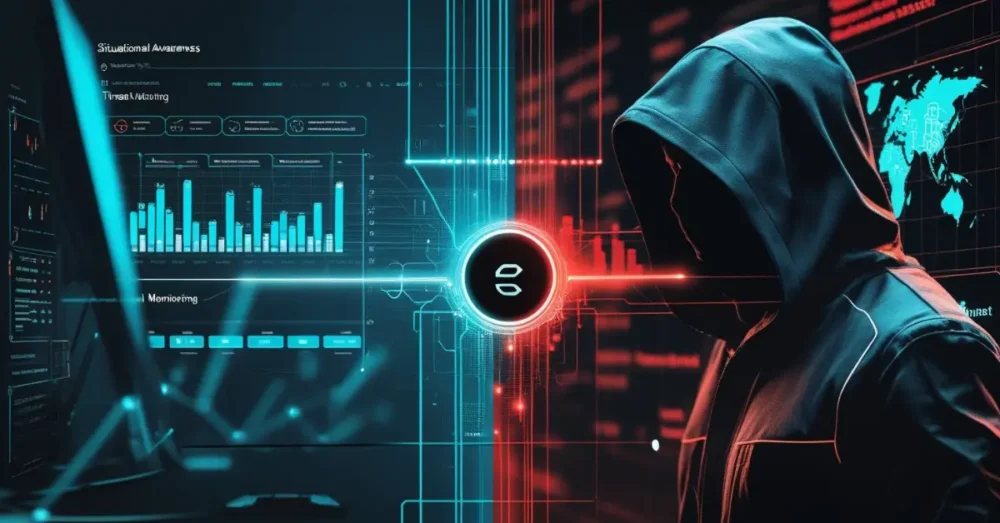
AI-Driven Remediation: Reducing Downtime Across Complex IT Stacks
July 9, 2025
The Rise of Autonomous IT Operations: What AIOps Platforms Must Enable by 2026
August 29, 2025In today’s digital-first world, cybersecurity isn’t just about firewalls and antivirus software—it’s about understanding the environment you’re protecting and the enemies you’re defending against. As cyber threats become more sophisticated, security professionals must adopt a dual approach: staying informed about the present and predicting the future. This is where situational awareness and threat intelligence come into play.
Often misunderstood or used interchangeably, these two concepts are not the same. Situational awareness provides insight into what’s happening within your organization’s systems right now. In contrast, threat intelligence focuses on external risks and adversaries. Combined, they create a dynamic and proactive defense mechanism that is essential for organizations striving to maintain strong network security and robust incident response strategies.
This blog unpacks the key differences between situational awareness and threat intelligence, explains why both are necessary, and shows how leveraging the two together leads to a smarter, faster, and more resilient cybersecurity posture.
Situational Awareness vs. Threat Intelligence
Understanding the distinction between situational awareness and threat intelligence is critical for building a well-rounded security strategy.
What is Situational Awareness?
Situational awareness refers to the real-time understanding of your internal digital environment. It involves monitoring your network, systems, user behaviors, applications, and devices to detect anomalies or suspicious activity. The main goal is to recognize threats as they emerge and to understand the context of normal vs. abnormal behaviors.
For example, if there’s a sudden surge in data leaving your network from a specific server, situational awareness helps identify this as a deviation from baseline activity. Tools like SIEMs (Security Information and Event Management), NDRs (Network Detection and Response), and endpoint monitoring platforms play a crucial role in establishing internal visibility.
What is Threat Intelligence?
On the flip side, threat intelligence is the collection and analysis of information about current and potential external threats. It provides insights into attacker behaviors, emerging malware, vulnerabilities, and tactics used by threat actors.
Threat intelligence answers questions like:
- Who might attack us?
- What tools and techniques are being used?
- What are the indicators of compromise (IOCs)?
- What’s happening in similar industries?
This intelligence is usually derived from open-source intelligence (OSINT), dark web monitoring, vendor threat feeds, and shared reports. It empowers security teams to proactively adjust defenses based on the evolving threat landscape.
Why You Need Bot
Organizations often focus heavily on either internal visibility or external threats—but true cybersecurity excellence lies in integrating both
1. Holistic Risk Management
Situational awareness gives you visibility into what’s happening inside your network right now, while threat intelligence gives you insight into what could happen based on external activity. Combining the two allows for a more comprehensive view of risk across both known and unknown vectors.
For instance, noticing a spike in login attempts (situational awareness) may not seem alarming until correlated with a known brute-force campaign targeting your industry (threat intelligence).
2. Faster and More Accurate Incident Response
Time is everything in incident response. Situational awareness can detect suspicious activity quickly, but without context, teams might struggle to prioritize threats. Integrating threat intelligence provides that context—helping analysts confirm whether an event is part of a known threat campaign and how to respond effectively.
For example, detecting lateral movement across endpoints might be confusing until it’s matched with intelligence indicating it’s a behavior associated with a particular ransomware strain.
3. Proactive vs. Reactive Security
Relying solely on situational awareness is reactive—you only act when something happens. Threat intelligence shifts the posture toward being proactive by helping teams anticipate attacks, prioritize patching, and harden defenses in advance.
Organizations that combine both can not only detect and mitigate ongoing threats but also prevent future ones through informed decisions and strategic foresight
4. Better Decision-Making
Security isn’t just a technical issue—it’s a business concern. CISOs and executive teams need reliable data to inform budgeting, staffing, and technology choices. Integrating both situational awareness and threat intelligence creates a clearer picture of where investments are most needed and how to allocate resources for maximum impact.
Conclusion
In a threat landscape that grows more complex every day, relying on just one dimension of visibility is no longer sufficient. Situational awareness helps you understand your organization’s internal environment, while threat intelligence arms you with knowledge of external threats.
By merging both strategies, organizations achieve a complete and layered approach to network security, capable of identifying, mitigating, and preventing threats with speed and precision. This holistic defense posture not only reduces risk but also builds resilience in the face of inevitable cyber incidents.
Whether you’re a small business or a global enterprise, investing in both situational awareness and threat intelligence is no longer optional—it’s essential.












